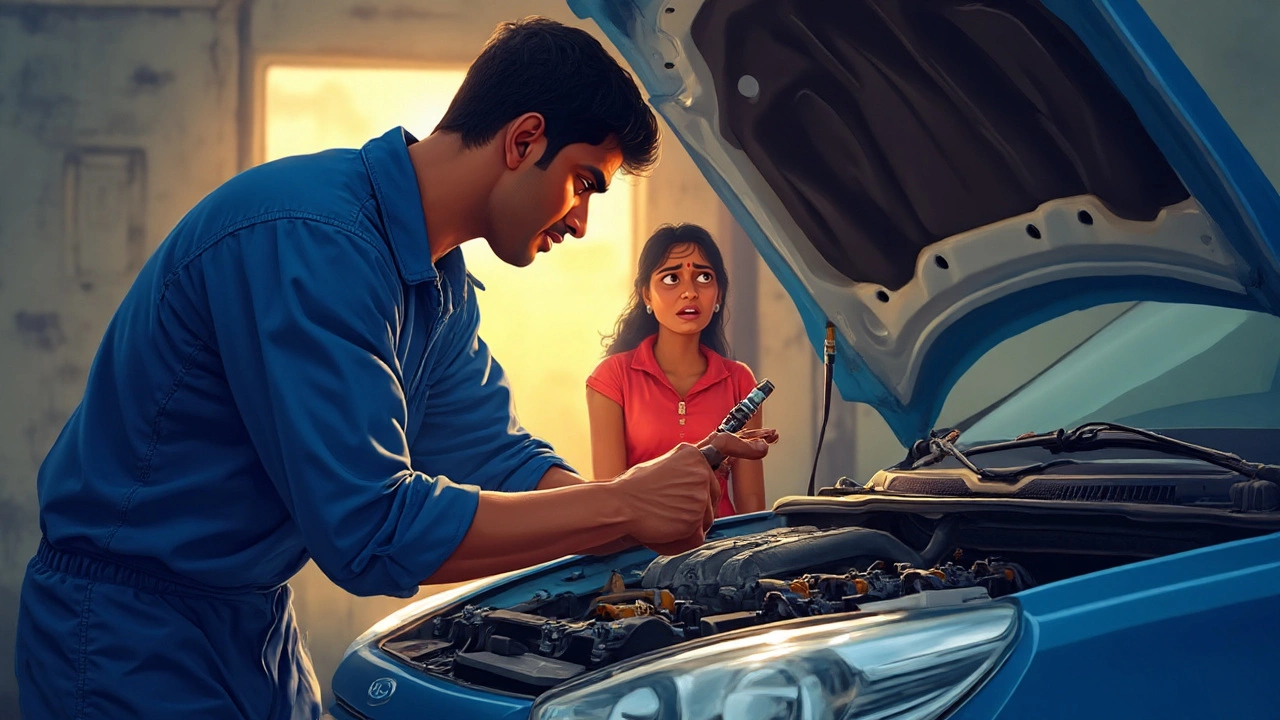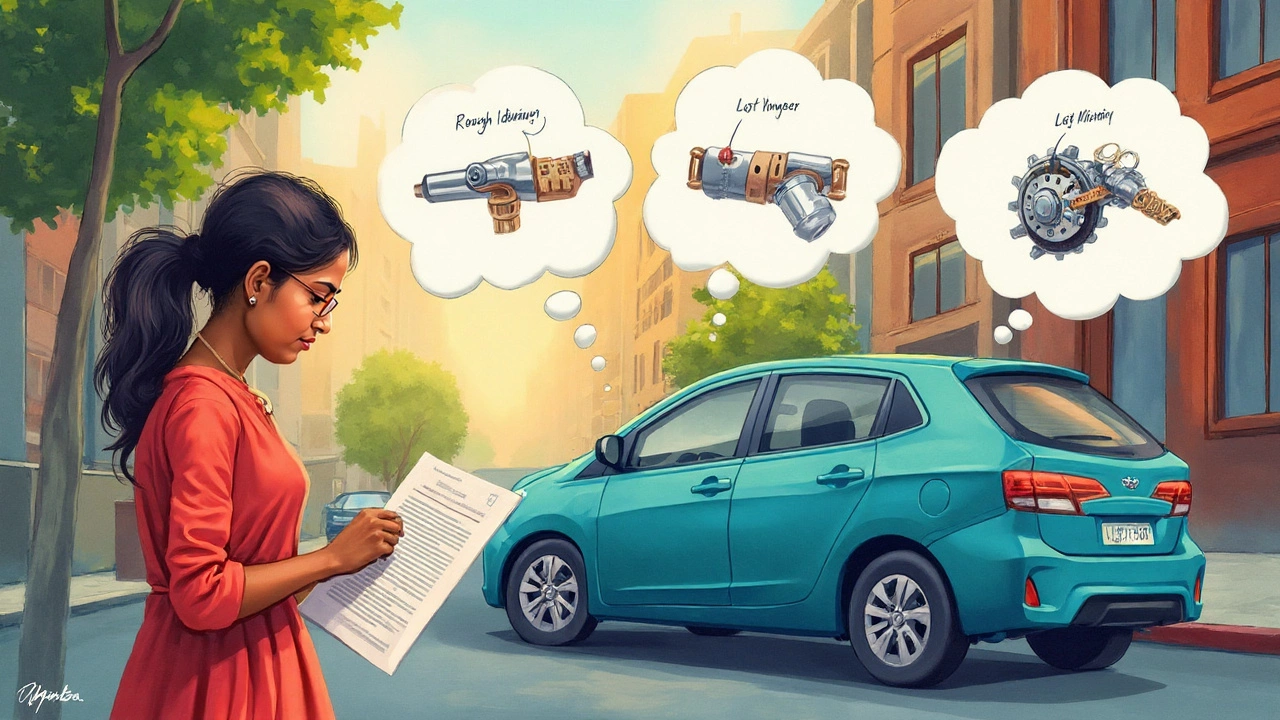 Aug, 6 2025
Aug, 6 2025
Ever been cruising down the road only for your car to start coughing like it’s caught a cold? You press the gas, but all you get is hesitation. Maybe you feel the engine shaking or there’s a mysterious drop in fuel efficiency. At first, it’s easy to shrug it off—bad gas, a heavy foot on the pedal, or maybe that fast-food cup rattling under your seat. But dig a little deeper, and the issue might be your fuel injectors waving a white flag.
Most car owners don’t think about fuel injectors until things go sideways. These tiny, hard-working nozzles squirt just the right amount of gas at high pressure straight into the engine’s cylinders. That spray has to be spot-on for your engine to run smoothly. Just a bit of gunk or dirt can throw everything off. If you ignore the signs of a clogged injector, you risk poor performance, engine knocks, and even a total stall at the worst possible moment.
How Fuel Injectors Work and Why They Clog
Your car’s fuel injectors might look simple, but they’re engineered for precision. They handle thousands of squirts every minute, and each droplet of fuel is delivered in a finely tuned mist. Instead of dumping fuel, they atomize it—breaking it down so combustion happens cleanly and efficiently. It’s what gives your car that smooth acceleration and decent mileage. Go back a few decades, and carburetors handled this clumsily—they’d flood or starve your engine. Injectors changed the game for both power and fuel efficiency.
So, how do they clog up? The main enemy is dirt—everything from unfiltered gas to microscopic debris lurking in old fuel lines. Sometimes it’s low-quality fuel, or maybe water sneaks in from condensation inside the tank. Over time, these particles build up in the injector’s tip or around the pintle (that needle inside the injector). Instead of a fine, even mist, you’re left with a splutter—or worse, a total blockage. Modern fuel contains detergents to help keep injectors clean, but that’s not foolproof, especially with today’s ethanol-blended fuels. The more short trips you take, the less time your engine and injectors have to burn off these residues. And if your air filter is dirty, even more junk can slip through.
Heat plays a role, too. When you turn the engine off, fuel can evaporate inside the injector and leave behind varnish-like deposits. Over thousands of miles, these build up, making it harder for the injector to open and close properly. The result? Your engine gets too much or too little fuel with every pulse, which quickly turns into frustrating performance issues.
Classic Signs Your Fuel Injectors Are Clogged
You don’t need a mechanic’s diploma to spot a misbehaving injector. The symptoms show up loud and clear if you know what to feel and listen for. Here’s what stands out:
- Engine misfire—The engine shakes, sputters, or stutters, most often at idle or when you hit the gas.
- Rough idling—Your car vibrates or hops when stopped. It might even sound like it’s about to die out, but rev it up and it clears (for a bit).
- Poor acceleration—You press down, and there’s nothing. Or the response is delayed. Forget quick merges or passing trucks.
- Reduced fuel economy—If your mpg drops for no reason, a clogged injector could be starving or flooding the engine.
- Hard starts—The engine cranks and cranks but doesn’t catch easily, especially first thing in the morning.
- Increased exhaust emissions—Sometimes your car might smell like rotten eggs because of unburned fuel, while the check engine light flickers with codes pointing to lean or rich conditions.
If you ignore these for too long, you risk damaging other expensive parts like the catalytic converter, spark plugs, or even the engine itself from poor lubrication. Not fun. Especially since most modern cars sync all these systems together—one weak link, and you get a domino effect of trouble codes and lights on your dash.
| Symptom | Possible Cause | Severity |
|---|---|---|
| Engine Misfire | Fuel injector clogged, bad spark plug | High |
| Rough Idling | Dirty fuel injector, vacuum leak | Medium |
| Poor Acceleration | Clogged injector, weak fuel pump | High |
| Reduced Fuel Economy | Partially blocked injector nozzle | Medium |
| Hard Starting | Severely clogged injector | High |
Not every symptom means the injectors are the issue, but if you’re seeing a few of these together—especially if another filter, plug, or pump problem is ruled out—it’s almost always a clogged injector or two gumming up the works.

How to Tell If It’s Really the Injector
It’s easy to jump to conclusions. Some problems look and feel like a clogged injector but are actually caused by bad plugs, failing sensors, or even a weak battery. Narrowing it down saves you time and money. Start with the basics: check your spark plugs (if they’re soot-covered or oily, it’s likely an injector) and check for engine codes with an OBD-II scanner. If you see codes like P0171 or P0301, those often point to cylinder misfires or lean fuel conditions, which are classic signs of injector malfunction. But you’ll want more proof before swapping injectors.
Some car enthusiasts swear by the “mechanic’s stethoscope”—basically a stick or screwdriver against the injector as the engine runs. If you hear rapid clicking, it’s opening and closing normally. A dead spot or no sound? Probably clogged. If you’re feeling brave, you can carefully unplug one injector at a time. If the engine note changes or starts running rougher, that one was working. No change? Bingo—it might be blocked or broken.
Professional shops test pressure in the fuel rail and sometimes use special cleaning kits to blast blockages out without full removal. But DIYers can try cleaning additives poured into the tank—they sometimes help, especially with mild clogging. Just don’t expect miracles. Severe blockages usually need the injector pulled out and ultrasonically cleaned, or replaced altogether. If you’re not sure, testing at a garage with flow rate equipment will show exactly how much fuel each injector sends. A healthy one sprays evenly, a blocked one barely mists or dribbles. The difference is obvious even to the naked eye.
What Happens If You Ignore a Clogged Injector?
Honestly, it’s like ignoring a toothache. It gets worse, costs more, and can take out other parts along the way. When your injectors clog, at first the symptoms are just annoying—shaking, bad mileage, maybe a hesitation on takeoff. But wait too long, and things pile up. The engine computer will try to compensate, dumping more fuel into other cylinders or retarding timing. That means extra heat, more carbon, and eventually, burnt valves or a cooked catalytic converter. Both are expensive, and some models hide their injectors deep in the engine, which means a labor bill that stings.
Your car might start stalling at intersections or struggle on hills. You could even fail an emissions test—one study showed that 60% of vehicles failing smog checks had injector problems as a root cause. Sometimes, fuel leaks past a stuck-open injector and washes down cylinder walls, thinning out engine oil. That’s a recipe for early engine wear and serious repairs. Plus, unburned fuel can overheat or even damage turbochargers in forced-induction engines, which is sad news for anyone who loves spirited driving.
On top of all that, you’re wasting money every time you fill up, since your engine’s running poorly and burning more gas than necessary. So instead of just feeling annoyed, you’re quietly burning a hole in your wallet. Not the best trade-off for skipping a simple check or cleaning.

Prevention and DIY Tips to Keep Injectors Clean
The smart move? Don’t wait until your dashboard lights up like a Christmas tree. Keeping fuel injectors clean is easier—and cheaper—than dealing with the fallout from full blockage. Here’s what actually works:
- Stick to high-quality fuel whenever you can. Top-tier stations add detergents that clean injectors every time you fill up.
- Swap out your fuel filter at the interval your owner’s manual suggests (usually every 20,000 to 40,000 miles). It catches most debris before it ever reaches the injectors.
- Run a fuel system cleaner once every 5,000 miles, especially if you do lots of city driving or short trips. Look for brands tested by independent labs for efficacy.
- Don’t let your tank go empty—a low tank picks up more sediment. Try to keep at least a quarter tank, especially in older cars.
- If your car sits for weeks, use a fuel stabilizer to block out moisture and prevent build-up in the system.
- Check your air filter regularly. Clogged air means dirtier fuel and worse atomization at the injectors.
- Change your oil on schedule. Engine gunk and poor oiling let deposits bake onto the injectors faster.
If a cleaner doesn’t cut it and you have some mechanical skill, you can carefully remove injectors and clean them with an ultrasonic bath. Some auto parts stores even rent cleaning kits. Just make sure to use new seals when reinstalling, or you’ll trade one leak for another.
For modern cars with direct injection systems—which are even more sensitive—maintenance is even more important. These injectors operate at much higher pressures (think upwards of 2,000 psi), and even tiny deposits can throw off the fuel spray pattern. If you’re driving a turbocharged model, that’s a bigger deal, since uneven fueling can lead to knock or turbo damage.
None of these steps are magic—if you’ve put hundreds of thousands of miles on original injectors, you may just need to bite the bullet and replace them. But with regular TLC, most injectors last at least 100,000 miles without trouble. That’s peace of mind every time you hit the starter.
Still unsure if your rough idle or bad mileage is the work of a clogged fuel injector? Don’t just guess—run through these checks, pay attention to your car’s needs, and trust your instincts when things feel off. Your engine (and your wallet) will thank you down the road.